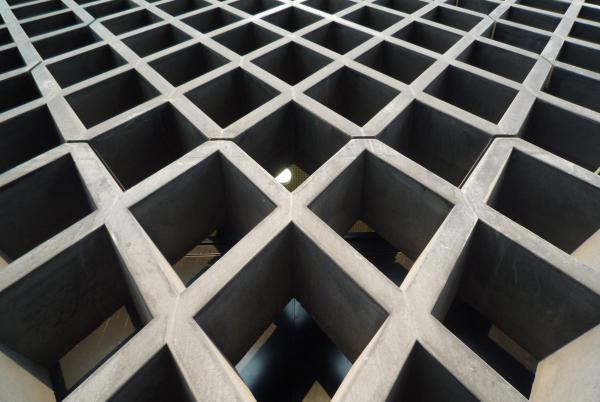
Vision
We see the future as a series of blank pages on which we draw boundlessly.
At Urbastyle we find great fulfilment in blending artistic design with urban needs and managing both towards effective execution.
Satisfaction is what we aim for, not satisfiction!
That's most likely why our team of committed craftsmen, engineers, architects and designers see their concrete solutions for public spaces installed throughout Europe and beyond.
We are proud to be where we are and have the best pride to serve you!
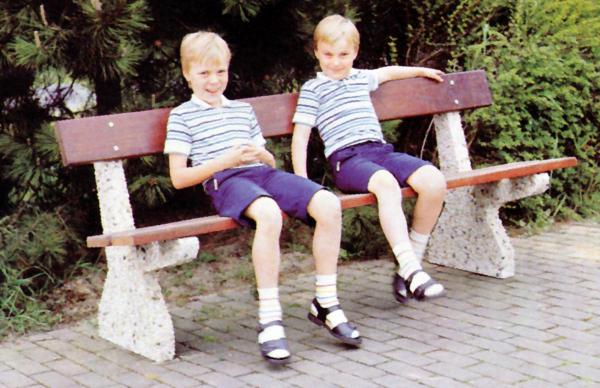
History
URBASTYLE is a long family story. It is Etienne Laroy, who first made his carreer in concrete industry then founded in 1985 URBADAL in Aalter, near Gent. The company was manufacturing at that times slabs, colombariums and street furniture with washed stones.
His two sons Jan & Bart joined him in the first part of the nineties to develop the company.
In 2001, they create URBASTYLE and in 2003, move to Tournai on a brand new site following all new requirements, strategically located at the crossing of main highways Lille-Brussels and Mons-Kortrijk-Bruges, only a few hundred meters from the Belgian-French border. The activity is developing with prefab structural elements for buildings: facade elements, balconies, stairs, ...
In 2003, the now famous head appears in the logo of the company, showing its human face as well as creative and technological. URBASTYLE releases its first multimedia presentation CD with 3D animations.
The company adopts the following slogan : "Man's mind once stretched by a new idea never regains its original dimensions" Oliver Wendel Holmes 1809-1894, doctor, professor at Harvard University and american poet.
URBASTYLE produces following CE norms. More recently, URBASTYLE evolved, used its know-how and competences to develop a quality street furniture with high perceived value and added value. The company made several innovations and parts pushing further the limits of concrete on the quality aspects, as well ason functions and uses.
In 2008, URBASTYLE lifts its corporate identity to be more contemporary and integrated. the company publishes quality catalogues to present its products and keeps on developing street furniture. FASONADO brand is created to market its large size slabs and paving products.
In 2012, URBASTYLE realizes with 3POD program, a strategic design study on its activity in the objective to develop its quality, performance, reinforce its skills, develop tis future, communication, recognition, reputation.
A new look and feel is created integrating the new communication, social networks. The company integrates the approaches of "universal design" or "design for all" for its new products in order to answer the the specific needs of people with physical, behavourial or mental difficulties.
In 2014, URBASTYLE goes greener, the roofs are equipped with photovoltaic solar panels that generate about 45% of the electricity consumption.
In 2015, URBASTYLE, proud of its results, sure of its strength and willing to reach new goals, adopts a new corporate identity and a new website.
URBASTYLE can be proud of its past and of what it has accomplished. To this day, it is the most important company producing concrete street furniture in the north of Europe. It keeps its development integrating new ideas, innovations, design, technologies, processes and machines.
Today, URBASTYLE creates new paths. It integrates the design processes as an engine of development. It strengthen its collaboration with architects and designers to create its products collections. URBASTYLE innovates its products, services, materials and processes.
The cities are smarter! The future of street furniture is evolving towards smart elements, communicating, customised, respectful of the environment, ... URBASTYLE stimulates and carries on this change with you developing its services, design advices for architects, urban planners, design studios, co-creation, co-development, furniture collections, smart tactile slabs, integration of LEDs, customization and much more.
Concrete is a plastic material, strong, performing, modern, creative. URBASTYLE gives you all the keys to enrich it, to make it speak and to sublimate it.
URBASTYLE : your be style !
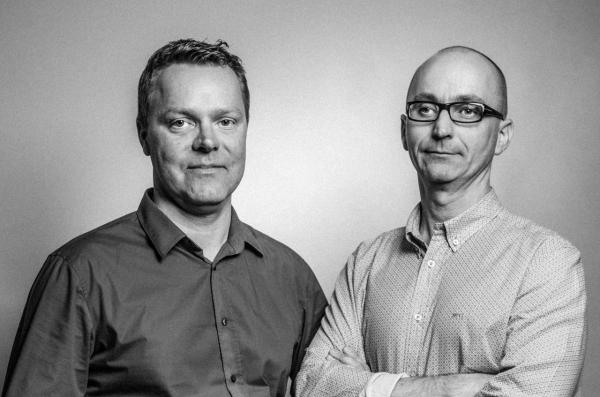
Quality - Certification
Among our personal values you'll find:
experience, talent, adaptability, flexibility, imagination, innovation, team work, enthusiasm and commitment.
Our professional values include:
production control from mould to finishing according to CE-standards, a brand new factory with space for extension, professionalism (to cut it short).
For the railway industry, we produce for SNCB-NMBS in Belgium, for NS in the Netherlands, we are SNCF certified and RISQS qualified for UK.
Street furniture produced by URBASTYLE is complying with EU standards for the material, mechanical resistance and also frost/defrost resistance, winter salts, etc.
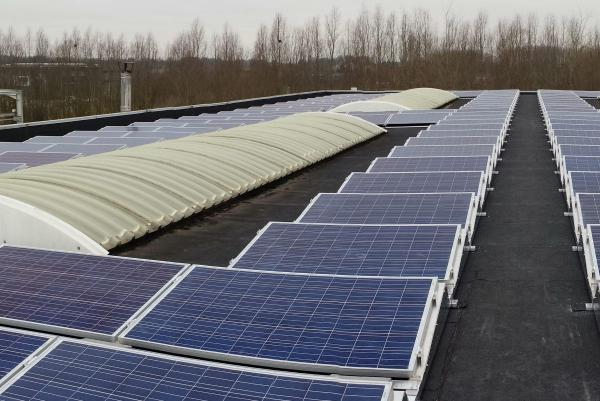
Sustainability
Commitment to the environment are not words without meaning and green is not our colour by mistake!
Since a lot of our products are used in green areas such as parks and gardens, we devote extra attention to environmental friendly production methods and more.
- Our products have a huge lifetime, we involve all our people in sustainable development and reject greenwashing ;
- Our producing facilities are recent, we moved from Aalter to Tournai in 2003 in brand new buildings respecting new norms ;
- We work with local partners and supplies whenever possible ;
- We are located in the heart of Europe, exactly between London, Paris and Brussels, to avoid long distances whenever possible and reaching 300 million population within 1000 km ;
- We are located near a big motorways knot, Belgian/French border and we are away from traffic jams, thus creating a good quality of life for our workers and partners ;
- We work with designers to create quality products people want to respect thus expanding their lifetime ;
- We work with an eco-designer to minimize the impact of our products from the drawing board ;
- We train people for quality, care and attention to details to avoid producing parts with defaults both costly for the company and the environment ;
- We make special efforts to avoid the use of chemical products in our production process and for example, all water, for both mixing and polishing, is taken from a closed re-circulating supply system, thereby minimising both water demand and waste drainage. ;
- We do maintenance and repair to avoid to throw or buy new if not needed ;
- We prepare the exact amount of concrete to avoid throwing it away ;
- We recycle our leftovers of concrete in big blocks to create walls ;
- We take care of our production tools with maintenance program ;
- We replace old material with new one using less energy ;
- We recycle wood of moulds in wood to heat up our production buildings during winter ;
- We use a sanding room with a close loop to reuse blasting sand ;
- We do research on new materials and techniques to improve concrete and its resistance in time ;
- We pack carefully and be sure that transporter has correctly anchored the loads in order to avoid damages during transportation and installation ;
- Our roofs are covered with photovoltaic solar cells that produce 45% of our electricity.
- ...
We keep on improving ourselves, our products, our vision, it is a daily commitment.
There is no style without respect!
Respect of nature means something for us!
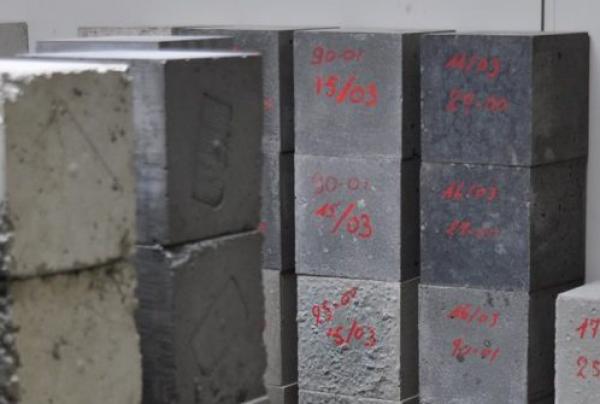
Architectural concrete
What is architectural concrete?
We use the term architectural concrete for an array of elements whose shape, finishing, colour, texture and excellent quality bring an essential contribution to a facade or any other construction or product. The main characteristic stands on its almost unlimited style, colour or surface possibilities. We can mold it in complex shapes.
Architectural concrete is:
- Mechanically very stable
- Waterproof
- Fire resistand
- Soundproof
- Thermically inert
- Extremely durable
- Ecological
- Recyclable
- …
Architectural concrete is a mix of solid minerals (white or grey cement, gravel, sand, color pigments), water and adjuvants. This combination gives concrete a great plasticity and to the finished product the physical and chemically properties requested... All this at advantageous price. Architectural concrete is one of the most interesting material on the market, economically speaking and for the usage made of it.
The cements, gravels, mixing water, adjuvants, waterproof agents, accelerators, plastifiers, ... are chosen in accordance with norms NBN EN 206-1 and NBN B15-001
Density from 2300 to 2500 kg/m3
Compressive strength at 28 days, from 30 to 80 N/mm²
Tensile strength, about 3 to 8 N/mm²
NB : concrete is a natural origin material and made of ingredients that can influence the aesthetics of the product. White clouds can appear on bright and dark colours. We speak of efflorescence. This phenomena can be fighted cleaning them with water and will vanish with time and rain.
Reinforcement
Architectural concrete generally needs to be reinforced with a metallic strucutre. This one, in case of an accident, keeps all broken parts together and avoids sharp brake or a chute. There is need to leave a reglementary 3 cm around the metallic structure. Think about it when you design your parts.
UHPC concrete
We can also use Ultra High Performance Concrete. It is a self placing concrete made with fibers. This concrete, more expensive, provides a much bigger resistance and does not use an internal structure. But if the part brakes, pieces are not holding together thanks to the metallic structure, so there will be probably need to replace it... Also, some national regulations impose a metallic structure, even with a UHPC concrete.
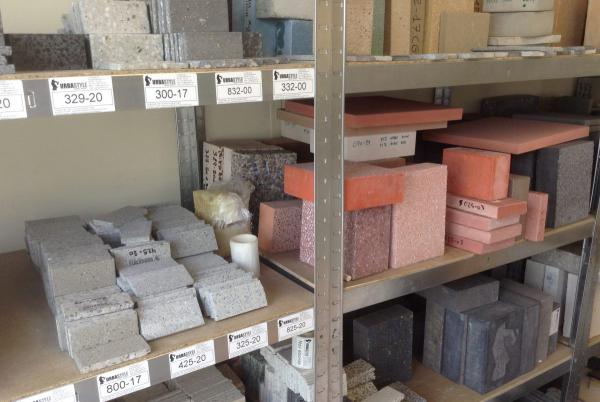
Know-how
Street furniture, it is 3D.
URBASTYLE designs, models and produces quality architectural concrete elements. To reach this result, we work in close relation with architects, designers, engineering offices that provide us files and plans that we can quickly convert in molds and production parts.
Moulding process
Architectural concrete is a mix of stones, colorings and binding materials (cement). Everything is mixed following different recipes. Then, concrete is poured in molds and vibrated or we let it settle before its release.
Production moulds
Moulds can be made of wood, steel, resin reinforced with fiber following the quantity or complexity. We can also obtain 3D textures with special imprints, like an elephant skin effect or wood for example. Architectural concrete elements are reinforced with a metallic structure prepared separately and included in the mold.
Finishings
Released parts then go to the finishing phase. We can choose between 4 different possibilities, either "fair faced", leaving the concrete skin as it is out of the mold, either "micro-etched", where concrete comes with a light irregular texture, either "polished", where concrete is mechanically polished like a mirror, either "velvet" that is a manual finishing that leaves a really nice feeling of fine softness. We have also a "Satin" finishing only for slabs as it is a machine made finishing creating a very fine and regular texture, a bit satin-matt, of great beauty.
It is interesting to notice that, depending on the finishing you choose, starting from a same identical block, we can get colors variations and texture effects radically different. Architectural concrete requires a real expertise and we are here to help you.
Curing
Architectural concrete is not very sensitive to temperature, it is not sensitive to frost. It is not a refractory concrete. Once the part is unmolded, it is strong but it did not reach its cruing. It requires about 28 days to cure completely and reach its final resistance. This curing can be made on the final site in the case of street furniture that rarely requires strong mechanical constraints.
UHPC
UHPC concrete (Ultra High Performance Concrete), that we use for some of our furniture is a high resistance concrete that does not use a metallic structure because it is reinforced with fibers. We can get thinner very resistive thicknesses. Its price is in accordance with its performance. Attention, if it breaks, the different elements are not maintained together by an internal metallic structure, it can break into different parts. You should then know very well why and where to use this kind of material so it does not create any safety failure for the users.
Packing
Then the elements are wrapped, protected against transportation shocks with wood, polystyrene, cardboard, plastic foil. You still need to manipulate the parts with the greatest attention and respect. Concrete is not light, you need forklifts or cranes to lift these elements. You will use preferably wide straps, you will be very careful not to hit the parts, angles, corners as they can easily be damaged or dented in this specific phase of transport and placement.
After sales
Concrete is repairable in case of light impact, but there is always a risk to lightly see the repair. Ask one of our specialists if you need an intervention.
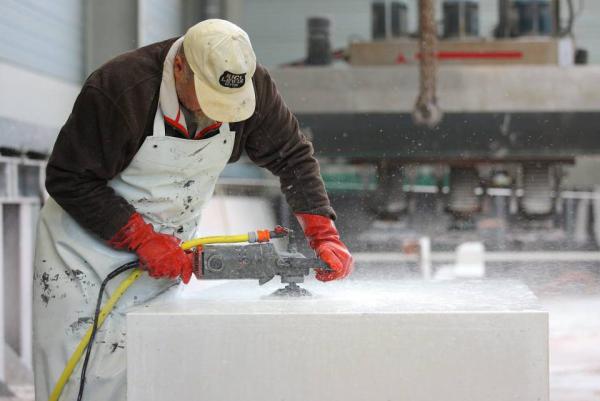
Maintenance of concrete street furniture
How to take good care of your street furniture?
Street furniture produced by URBASTYLE complies with European standards in terms of material composition, mechanical strength but also resistance to frost/defrost cycles, de-icing salts.
Depending on the type of finishing you choose, the surface is more or less smooth, more or less waterproof to dirt and water.
Our products can be treated against graffiti, this treatment also prevents against the penetration of oil, grease, water, urine, ...
It is always good to remember some recommendations to prolong the life of your furniture as long as possible.
Cleaning
We don’t clean street furniture as we want, because modern street furniture concrete may have an anti-graffiti treatment and must of course respect the environment.
We never use acid for example for cleaning street furniture, as this may deteriorate the concrete, steel, anti-graffiti protection. We do not sandblast the surfaces either, that would definitely lead to deterioration and damaging the protection.
Concrete, although an extraordinary material particularly suited for urban furniture, may be subject to factors that could make it look ugly or dirty:
- The efflorescence, normally a temporary phenomenon that causes white clouds on the surface of the material
- Vegetation growth
- Dirty by dust
- Dirty by graffiti
- Dirty by chewing gum
- …
Efflorescence
Efflorescence is a normal phenomenon with concrete made with lime. Depending on the acidity of rainwater, calcium carbonate dissolves and flows with rainwater without any consequences for the sustainability of concrete. You can use the water jet to clean your items. Beware that a water jet with too high pressure may damage your furniture, or takes away the rocks by natural water erosion phenomenon. Adjust your pressure.
Vegetation
Sometimes, specific vegetation grows on the surface of concrete: algaes, mushrooms, moss ... This can be also quite aesthetic, but often the application of a biocide solves this problem. Our anti-graffiti treatment also reduces the appearance and development of these vegetal organisms. Choosing a smooth finish is also preferable to a "fair face" finishing to prevent this.
Dust
Wind and rain carry dust, fine or large ... Often this dust accumulates at the foot of street furniture. Therefore prefer a design that, with a little design of 2 cm off the ground, keeps the visual cleanliness of the base of the furniture. Occasionally, you can brush when it is dry or use a light water jet.
Graffiti
At URBASTYLE, we try to develop products with studied design and high perceived value, which do not encourage tagging. In this case, prevention comes first. But our furniture can be treated with anti-graffiti products. Treatment should be repeated preferably every five years for better efficiency.
Chewing-gum
So far, the best treatment found to remove chewing gum is to spray high-pressure steam to loosen the sticky one. A small scraper and a vacuum cleaner complete the system.
Wooden elements
URBASTYLE has a FSC agreement. If you have chosen furniture which includes wooden elements, either you choose a wood naturally resistant to the environment, or you have chosen treated wood. Paints, varnishes must be renewed regularly, 1-2 times a year in case of intensive use. Prefer a summer or warm autumn day for this treatment because if you leave untreated wood in humid conditions, cold, it will gray out, inflate, get black, it will break even more your varnish and it will be very difficult to hide the color or material difference at the surface of the wood. In general, for urban furniture, we rather try from the start, to choose a wood that does not require maintenance, treated by saturation, autoclave, or heat treatment, high-class wood, FSC, naturally resistant, because the maintenance staff does not always have the time to take care of it. If the wooden element has been tagged or burned, the only solution will be to sand the damaged part up to a clean surface or to replace the part. Be careful not to sand too much and weaken the mechanical characteristics of the plank or wood section that you use.
In short
All these recommendations are not complete. We must consider the problem from the start. When designing the layout, it is best to avoid placing street furniture near a road where lorries are salting with wide spectrum for example because the action of the salt deteriorates materials, even stainless steel.
The best prevention is to stimulate the continued use of the furniture by people who, by using it, will naturally polish and clean the furniture, it will also prevent physical deterioration or tags. Choose a high level designed furniture that has been designed down to the smallest details, a well-designed quality furniture is more easily used and respected.
To preserve your street furniture, simply clean it from time to time with a water jet or stiff brush with a little bit of soap. Always rinse thoroughly after use. However, be sure not to damage the concrete structure with too concentrated and too powerful jet.
In case of accident or if you notice a significant physical deterioration of the urban furniture that requires an intervention, evaluate the type of problem: crack, break, risk of physical danger, need for repair or replacement, take a picture and write a report ... In some cases, we can repair the part on the spot, if temperatures are positive and the furniture is a URBASTYLE product (We know our specific mixtures that we can reproduce).
If the element is too damaged, or if it is an important historical element (fountain, signal, column, memorial ...), we can also think about a restoration after evaluation and quote.
We wish you a lot of pleasure and satisfaction with URBASTYLE services and street furniture.
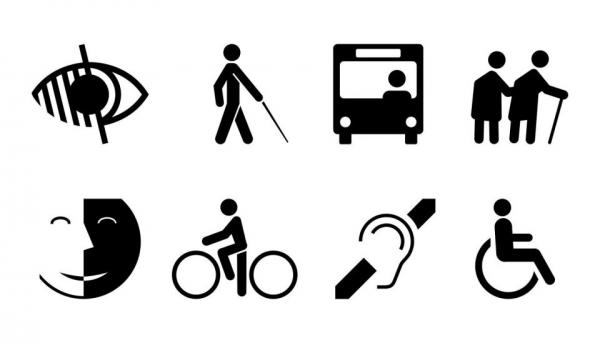
We design for all
"Universal design" or "Design for all" is not only a question of disability
At Urbastyle, we are aware that the urban environment must be planned to take account of the needs of as many people as possible. We are also aware that this is a process, it is impossible to meet the needs and concerns of all handicaps, all situations, but we are working in this direction. A street furniture lasts several years or decades in the case of concrete street furniture, we must therefore foresee, anticipate.
This is why we integrate the proactive approach of universal design in the development of our new products. In the society, there are visually impaired people, citizens with temporary or permanent physical disabilities, with wheelchairs, people seeing badly contrast or shapes, people with arms encumbered with a load of packages, holding their children by the hand or pushing a pram. There are also people with muscular problems or with cognitive disabilities. We are all from time to time in a situation that limits us. There is nothing more designed and planned than the city and its urban developments that affect us all and still, we find mistakes or wrongdoings with time. Now, some countries such as France, Belgium, issue templates, recommendations for improvements that must be followed.
This "design for all", you will not necessarily see it obviously in our furniture but you will feel it. It is a question of centimeters, angles, backrests, seating, materials, way to organize functions. It is a work which must be renewed every day on various projects.
We can’t solve all problems with our furniture, it is also the responsibility of buyers, architects, planners, landscapers to arrange the furniture, design and develop, taking into account these special needs that in fact are ideal for all. With this approach, our goal is not to design only for people with disabilities. Our goal is that the design that we do serves everyone and takes into account also these specific needs. We are working in this direction also to provide information to the people working with us, architects, urban planners, designers about all these good practices, because before all, we work in the spirit of a better world that respects us all, respects nature and our nature.
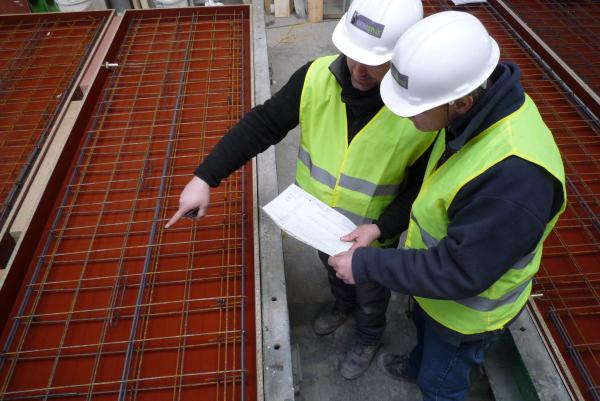
Movies
Here you can find a few movies made about URBASTYLE, its products or projects.
2017 (FR) Concrete bases of the new urban signature of Liège city
2017 (all languages) Hyjo benches at NATO HQ in Brussels
2015 (all languages) Westfront Nieuwpoort, WW I Memorial, Albert I, flight with drone
2014 (FR) NoTélé URBASTYLE, Design stratégique, mobilier urbain en béton
2013 (FR) RTBF Made in Belgium
2013 (FR) URBAXXES séquence LED Transports publics
2013 (FR) Design et Stratégie d'entreprise 3POD
2013 (all languages) Turnhout
2012 (all languages) Fountain in Ingelmunster
2007 (FR) Reportage RTBF, la Une au quotidien en direct de chez URBASTYLE
2003 (EN) URBASTYLE imaginary city
2018 - (EN) New Privacy Policy